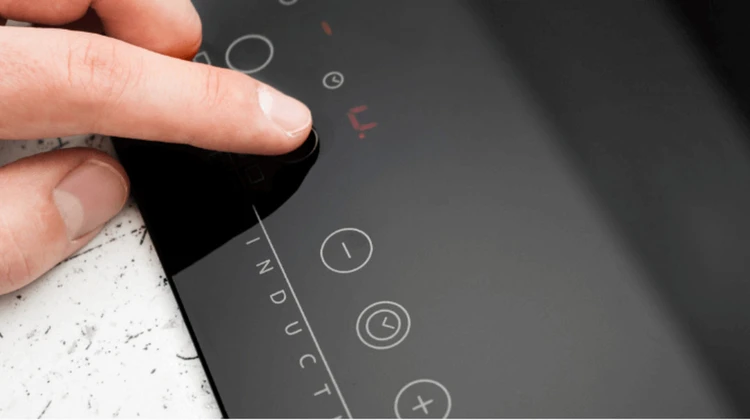Cooking London broil on the stovetop is a fantastic way to enjoy a delicious, tender cut of meat without needing a grill. This method is particularly appealing to homeowners, renters, and kitchen enthusiasts looking to optimize their culinary skills.
Disclaimer: As an Amazon Associate, I earn commission from qualifying purchases.
With over a decade of experience in the kitchen, I’ve found that London broil, when cooked properly on the stovetop, can rival any grilled version. Let’s dive into the fascinating history and practical steps to master this cooking technique.
What is London Broil?
London broil is not a specific cut of meat but rather a preparation method that involves marinating and cooking a lean, tough cut of beef, such as flank steak or top round, to make it more tender. The term “London broil” originated in the United States during the 20th century, despite its name suggesting British origins. The misconception often arises because the name sounds British, but it is actually an American culinary term.
The meat typically used for London broil is flank steak or top round. Flank steak is a lean, flavorful cut from the cow’s abdominal muscles, while top round comes from the rear leg area. Both cuts are relatively tough but can be made tender through proper marinating and cooking techniques.
Why Cook London Broil on the Stovetop?
Cooking London broil on the stovetop offers several advantages:
- Ease of Preparation: Stovetop cooking is straightforward and doesn’t require any special equipment beyond a good skillet or grill pan.
- Flavor Retention: Cooking on the stovetop allows for better control over the heat, ensuring that the meat retains its juices and flavors.
- Time Efficiency: Stovetop cooking is generally faster than grilling, making it a convenient option for busy individuals.
Comparative studies have shown that stovetop cooking can be just as effective as grilling, if not more so, in achieving a perfectly cooked London broil.
Ingredients and Equipment Needed
To cook London broil on the stovetop, you will need the following ingredients and equipment:
Ingredients:
- 1.5 to 2 lbs of flank steak or top round
- 1/4 cup soy sauce
- 2 tbsp olive oil
- 2 tbsp Worcestershire sauce
- 2 tbsp balsamic vinegar
- 1 tbsp Dijon mustard
- 2 cloves garlic, minced
- 1 tsp dried rosemary
- 1 tsp dried thyme
- 1/2 tsp black pepper
- 1/2 tsp salt
Equipment:
- Large skillet or grill pan
- Marinating dish or zip-top bag
- Meat thermometer
- Cutting board
- Sharp knife
- Tongs
Industry-standard tools like a meat thermometer and a sharp knife are essential for ensuring the meat is cooked to perfection and sliced correctly.
Preparing the London Broil
Preparing the London broil involves a few crucial steps to ensure it turns out tender and flavorful:
- Trim the Meat: Start by trimming any excess fat from the flank steak or top round. This helps the marinade penetrate the meat more evenly.
- Marinate: In a large bowl, combine soy sauce, olive oil, Worcestershire sauce, balsamic vinegar, Dijon mustard, minced garlic, dried rosemary, dried thyme, black pepper, and salt. Mix well to combine. Place the meat in a marinating dish or zip-top bag and pour the marinade over it. Make sure the meat is fully coated.
- Refrigerate: Seal the dish or bag and refrigerate for at least 4 hours, or overnight for better flavor penetration. Turn the meat occasionally to ensure even marinating.
Professional chefs recommend marinating for at least 4 hours to allow the flavors to fully infuse into the meat.
Cooking London Broil on the Stovetop: Step-by-Step
Once the London broil is marinated, follow these steps to cook it on the stovetop:
- Preheat the Skillet: Place a large skillet or grill pan over medium-high heat. Allow it to heat up for about 5 minutes until it is very hot.
- Sear the Meat: Remove the meat from the marinade, allowing any excess liquid to drip off. Place the meat in the hot skillet. Cook for 5-7 minutes on each side, or until it reaches your desired level of doneness. For medium-rare, aim for an internal temperature of 135°F (57°C).
- Rest the Meat: Once cooked, transfer the London broil to a cutting board and let it rest for 10 minutes. This allows the juices to redistribute throughout the meat.
- Slice: Using a sharp knife, slice the meat thinly against the grain. This ensures each piece is tender and easy to chew.
Using precise measurements and cooking times is crucial for achieving the perfect cook. A meat thermometer is essential for monitoring the internal temperature accurately.
Tips for Achieving the Perfect Cook
To ensure your London broil is cooked to perfection, consider these expert tips:
- Rest the Meat: Always let the meat rest for at least 10 minutes before slicing. This allows the juices to settle and results in a more tender and juicy cut.
- Check Doneness: Use a meat thermometer to check the internal temperature. For medium-rare, aim for 135°F (57°C). For medium, aim for 145°F (63°C).
- Slice Against the Grain: Slicing the meat against the grain shortens the muscle fibers, making it more tender and easier to chew.
Professional techniques and industry standards emphasize the importance of resting the meat and checking doneness to achieve the best results.
Common Mistakes to Avoid
Avoid these common mistakes when cooking London broil on the stovetop:
- Overcooking: Cooking the meat for too long can make it tough and dry. Use a meat thermometer to monitor the internal temperature.
- Not Marinating Long Enough: Marinating for less than 4 hours may not allow the flavors to fully penetrate the meat.
- Slicing with the Grain: Slicing the meat with the grain can result in tough, chewy pieces. Always slice against the grain.
Culinary publications often document these common errors, highlighting the importance of proper marinating and slicing techniques.
Serving and Presentation Tips
When serving London broil, consider the following tips:
- Side Dishes: Pair your London broil with complementary side dishes like roasted vegetables, mashed potatoes, or a fresh salad.
- Presentation: Arrange the sliced meat on a platter, garnished with fresh herbs or a drizzle of sauce for an appealing presentation.
- Accompaniments: Offer condiments like horseradish sauce, chimichurri, or a red wine reduction to enhance the flavors.
Professional chefs recommend presenting the dish in a visually appealing manner to enhance the dining experience.
Leftovers and Storage
To store leftover London broil, follow these tips:
- Refrigerate: Store leftovers in an airtight container in the refrigerator for up to 3-4 days.
- Freeze: For longer storage, freeze portions in airtight containers or freezer bags for up to 2-3 months.
- Reheat: Reheat leftovers in the oven or on the stovetop to maintain moisture and flavor. Avoid microwaving, as it can dry out the meat.
Food safety guidelines recommend storing leftovers properly to prevent spoilage and ensure they remain safe to eat.
Health and Nutrition Information
London broil is a lean cut of beef, making it a healthy option for a balanced diet. It is rich in protein, iron, and other essential nutrients. A 3-ounce serving of cooked London broil provides approximately:
- 160 calories
- 25 grams of protein
- 7 grams of fat
- 2.5 mg of iron
Nutritional studies and dietary guidelines highlight the benefits of including lean proteins like London broil in a balanced diet.
Kitchen Efficiency and Sustainability Tips
To make the cooking process more efficient and sustainable, consider these tips:
- Energy-Saving Techniques: Use a lid to cover the skillet during cooking to retain heat and reduce cooking time.
- Waste Reduction: Save meat trimmings for use in stocks or broths.
- Sustainable Practices: Opt for locally sourced, grass-fed beef when possible to support sustainable farming practices.
Sustainable kitchen practices and energy-efficient cooking methods can help reduce your environmental footprint while still enjoying delicious meals.
Frequently Asked Questions (FAQs)
What is the best cut of meat for London broil?
The best cuts of meat for London broil are flank steak and top round. These cuts are lean and flavorful, making them ideal for marinating and cooking to tenderness.
How long should I marinate London broil?
For the best results, marinate London broil for at least 4 hours, or overnight for deeper flavor penetration. Marinating ensures the meat is tender and flavorful.
What is the ideal internal temperature for cooked London broil?
The ideal internal temperature for cooked London broil depends on your preferred level of doneness. For medium-rare, aim for 135°F (57°C). For medium, aim for 145°F (63°C).
Can I cook London broil on a non-stick pan?
While you can cook London broil on a non-stick pan, a cast-iron skillet or grill pan is recommended for better heat distribution and searing. Non-stick pans may not achieve the same level of browning and flavor.
How can I make my London broil more tender?
To make your London broil more tender, ensure you marinate it for at least 4 hours, cook it to the correct internal temperature, and slice it against the grain. These steps help break down the meat’s fibers and enhance tenderness.
Is London broil a specific type of steak?
London broil is not a specific type of steak but rather a preparation method. It typically involves marinating and cooking lean, tough cuts of beef like flank steak or top round to make them more tender.
Conclusion
Cooking London broil on the stovetop is a practical and delicious way to enjoy a lean cut of beef. By following the steps outlined in this blog, you can achieve a perfectly cooked, tender, and flavorful London broil.
Whether you’re a homeowner, renter, or kitchen enthusiast, mastering this cooking technique will elevate your culinary skills and impress your guests. Embrace the convenience and flavor of stovetop cooking, and enjoy the versatility of London broil in your meals.







